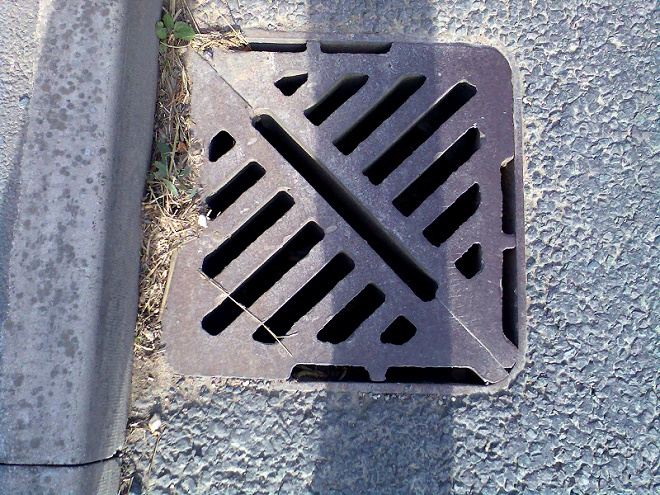Drainage
Drainage systems are a very important feature of the road network. As well as being crucial for the safety of our roads during rain, proper drainage also helps the road surface last. Shropshire Council has a duty under the Highways Act to maintain a safe highway network. This includes the provision of adequate drainage.
Use the video and information on this page to find out more about the work we carry out to maintain the gullies and drains on Shropshire’s roads, to protect them from flooding.
Video: Highways drainage
How do we drain water from the roads?
There are a number of ways to drain roads, but historically gullies are the most common. A gully is a large pot covered by a metal grid, usually found at the edge of a road or in pedestrian areas.
They are used to collect surface water from the road or pavement and drain it into a piped system (often a ‘surface water sewer’ maintained by a water company), an adjacent stream or river (referred to as a ‘watercourse’) or a roadside ditch.

How do we keep gullies clean?
Gullies can become blocked by a build-up of silt or mud coming off the road, or washed off nearby land. Gullies are routinely cleaned once a year by a mechanical emptying machine, and more often if required.
Water is put into the gully pot to loosen the contents and then a pump is used to suck it out. Other forms of drainage are checked, cleaned or repaired when required, or when a problem is reported to us.
Sometimes a gully may appear to be blocked but the problem could be with the piped system into which the gully is connected. Such blockages can ordinarily be cleared by high pressure water jetting the connection but, if this doesn’t work, a CCTV survey may be needed to establish if the connection has been broken by other work in the road or penetrated by tree roots. This may mean much more significant work (i.e. digging up the road) to repair the connection.
What other problems do we deal with?
New roads include designed drainage systems intended to remove water efficiently from the surface of the highway to provide safe passage for all vehicles and pedestrians. Where the surface water is to be disposed of using traditional methods (sewers), Shropshire Council won’t adopt the road until the sewers have been adopted by a water company.

When sewers or drains become blocked, localised ponding or flooding may occur, which is slow to clear. In times of heavy storms, sewers may become full but the ponding or flooding clears quickly when the rain stops and the level of flow in the sewer drops allowing the gullies to work.
Alternatively, if the gully connection discharges into a watercourse and the level of the stream or river is high, the water is unable to escape and can back up, causing localised flooding until the watercourse level falls again.
How to report flooding on the roads?
To report urgent problems of flooding please telephone 0345 678 9000 giving details of the location. In extreme weather conditions with heavy rainfall, work will be prioritised depending upon the severity.
For all non-urgent problems, such as blocked gullies and drains, please use our online forms.
Please note, drains and pipes carrying sewage are the responsibility of the water authority and problems should be reported direct to them.
What are we doing to reduce the risk of flooding on our roads?
Our aim is to maintain a safe highway by continuing to assess and prioritise high risk flooding issues and programme them accordingly.
Future highway drainage schemes will aim to reduce the number of residential and business properties at risk of flooding, and fewer flooding related highway safety concerns (measured as the distance of highway better protected from flooding), and reduced pollution of watercourses through the transport of pollutants through highway drainage systems.